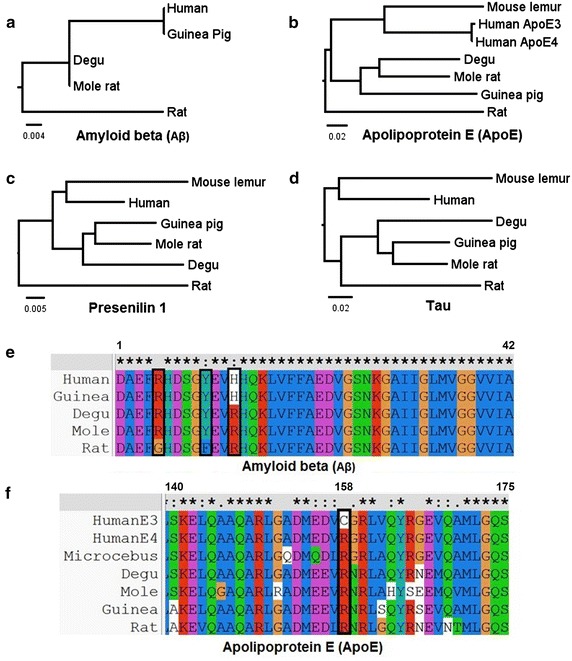Fig. 1.

Phylogenetic analysis of 4 proteins involved in Alzheimer disease. a Phylogenetic tree of Aβ. The tree shows that the sequence for the degu is identical to that of the mole rat and is more similar to that of human and guinea pig than it is to that of the rat. b Phylogenetic tree of ApoE, showing that degu ApoE is more similar to the human protein than it is to rat ApoE. c Phylogenetic tree of Presenilin 1. The tree shows that the sequence for the degu is grouped with that of the mole rat and the guinea pig and is separate from the human and mouse lemur grouping. As occurs for Aβ and ApoE proteins, the Presenilin 1 sequence for the rat is outside of both groupings. d Phylogenetic tree of tau. In this case, the sequence for the rat is grouped with that of other rodents. e Multiple alignment of Aβ shows the three aminoacids (boxed) that differ between the rat and the other species; by contrast there is only one difference between degu and human APP sequence (H684R). f Multiple alignment of ApoE. There is a single difference between human ApoE3 and ApoE4 alleles (C112R, boxed); interestingly, this ApoE4 variant is the one that is present in all the other species. Aβ mouse lemur sequence is absent in the phylogram showed in a, because it was not available at the time of analysis
